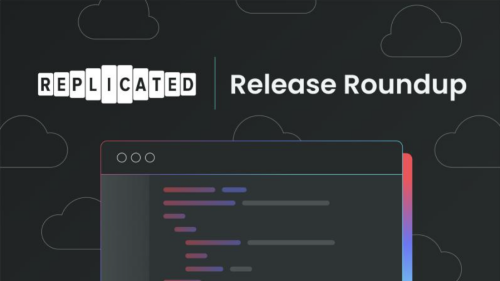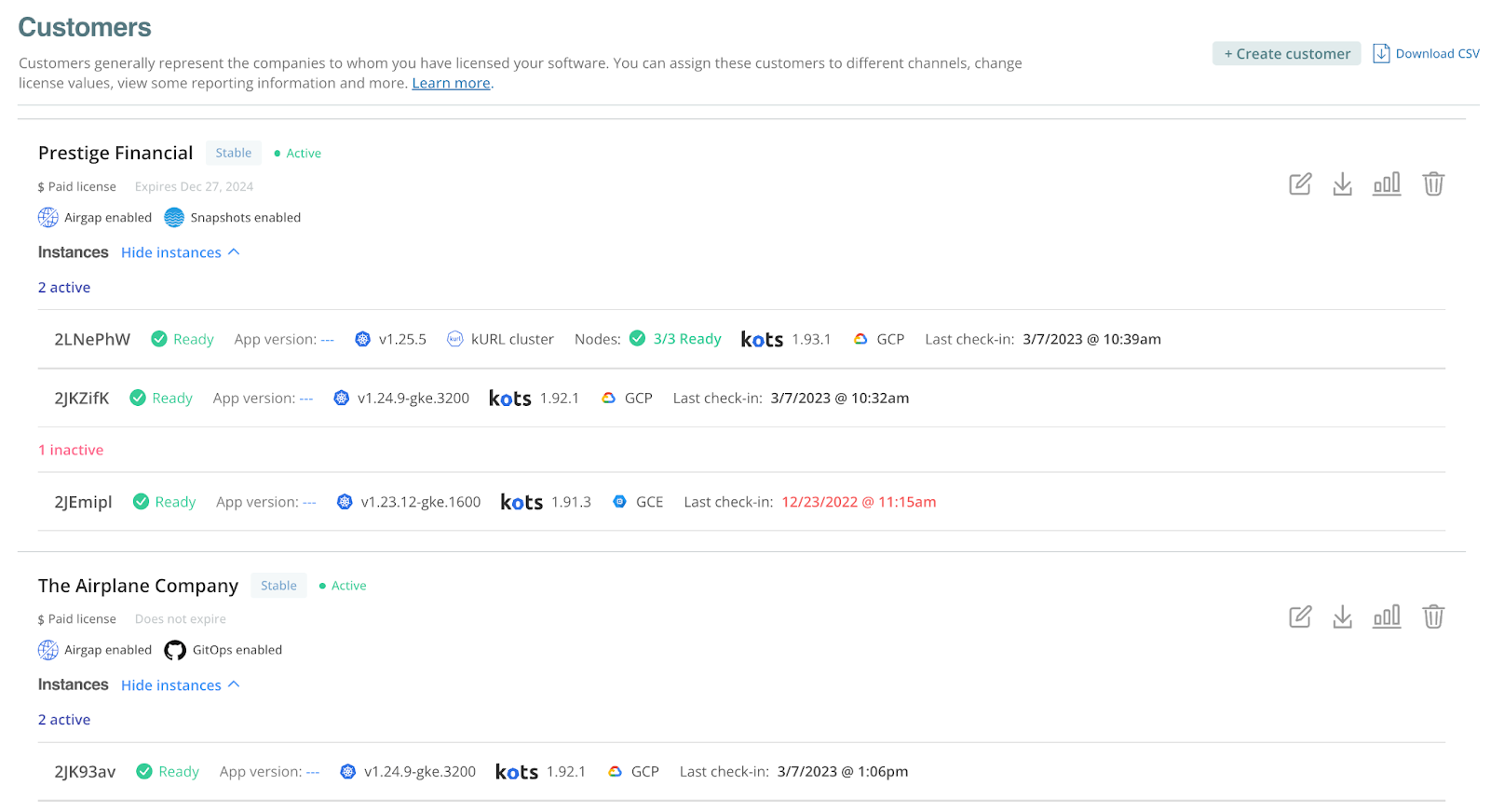
As the warm weather is being distributed more widely, our Product & Engineering teams are springing forth new features. It’s time for another fresh batch of exciting capabilities newly available in our application manager, our Kubernetes installer, and the vendor portal. Check out the recently shipped features and release highlights for April 2023 below.
What’s New for The Vendor Portal:
Vendor Portal: Instance Summaries in Customer List View
This adds more visibility into the improved instance reporting and details for your customers. This new view will allow you to quickly see the status of your customers in a single place.

Vendor Portal: Improved Performance of The replicated Proxy Registry in Globally Distributed Regions
We have migrated the data layer of the replicated proxy registry to a CDN-managed edge worker which will result in improved image pull times for global enterprises. Enjoy the improved performance!
What’s New for The Application Manager:
Application Manager: Significant performance improvements for creating, configuring, diffing, and deploying application versions (v1.96.0)
We have enhanced the performance of processing application versions. In some cases, you can see up to a 10x speed up when diffing two different application versions. Upgrade your KOTS version to v1.96.0 or higher to see these performance enhancements!
What’s New for Troubleshoot
Troubleshoot: Control the Verbosity of Troubleshoot CLI Debug Logs with The Verbose Flag (v0.58.0)
You can now control the verbosity of the troubleshoot CLI with the -v flag.. Users can pass a verbosity level to increase the number of logs printed. Zero (-v=0) is the lowest verbosity level and shows minimal logs of internal operations, whereas -v=2 prints every log line.
Troubleshoot: Now Supports for RHEL 9 and Its Variants (v0.58.0)
Collectors and analyzers that are operating system (OS)-specific or collect OS version information were updated to generate support bundles and run preflights on RHEL 9 and its variants (CentOS 9 Stream, Oracle Linux 9 and Rocky Linux 7, 8, 9).
What’s New for the replicated Documentation
replicated Documentation: Improved Content for Volume Snapshots
Added content to the vendor docs to help vendors understand snapshots from the enterprise perspective, and also provided a list of resources to help troubleshoot snapshots. This helps vendors better understand the feature end-to-end without having to navigate to the enterprise docs section, and can help vendors guide and support their customers with this complex feature.
replicated Documentation: Added Documentation on How to Upgrade Kubernetes by More Than 2 Minor Versions in Embedded Clusters
We updated the enterprise user docs with information about how to work with your application vendor to upgrade K8s by more than 2 minor versions. We also added information about how to support enterprise users in K8s upgrades by accessing previously-promoted installers on the Installer History page.
replicated Documentation: Added Documentation on How to Consume Prometheus Metrics Externally
It is common for enterprises to have a centralized monitoring system that is external to an embedded cluster, such as a Grafana instance. We added documentation that explains how to connect to the Prometheus NodePort service running in kURL clusters to consume these metrics from an external monitoring solution.
replicated Documentation: Added List of Supported Private Registries for Vendors, and Related Improvements
We added a list of the supported private image registries that you can use for your applications. This update also clarifies the difference between the supported registries for vendors, and the supported registries where enterprise users can push images from the admin console Registry Settings page.
replicated Documentation: Enterprise User Installation Content Clearer and More Concise
By splitting out the air gap installation procedures, consolidating the prerequisites, and organizing the conceptual information into easy-to-find sections, we have made our installation content easier for you to copy and reuse when writing your own docs.
replicated Documentation: Improvements to The Native Helm Documentation
We’ve made several improvements to the documentation for the native Helm and replicated Helm deployment options to make the content easier to find and understand. To better support your onboarding with native Helm, we reduced redundancy in the topics, moved the content to a top-level drop-down in the TOC, and also made sure product terminology is consistent across the native Helm docs.
That’s it for the April release highlights! Want to learn more about these new features and what replicated does to help vendors and customers install and manage modern apps on-prem? We would love to show you -- click here to schedule a demo.